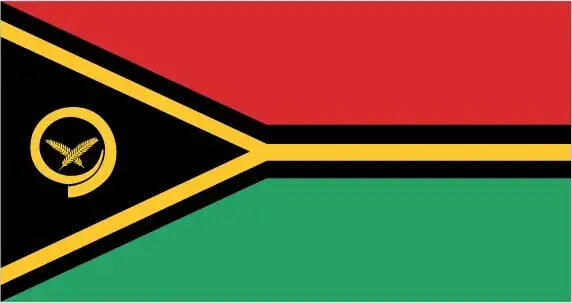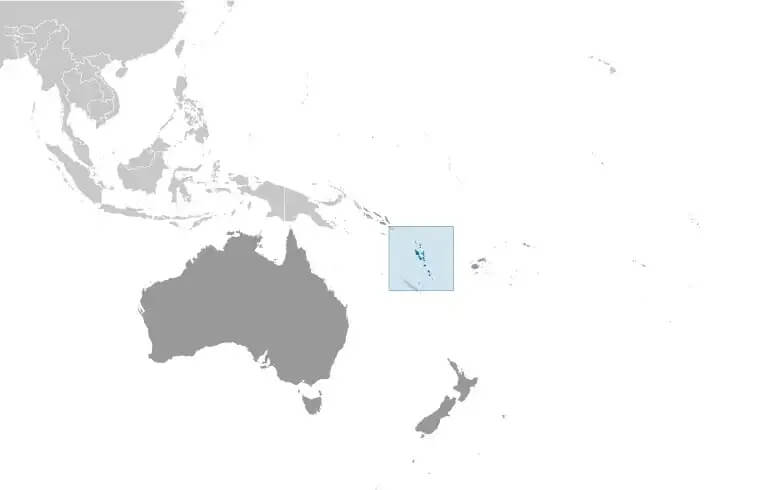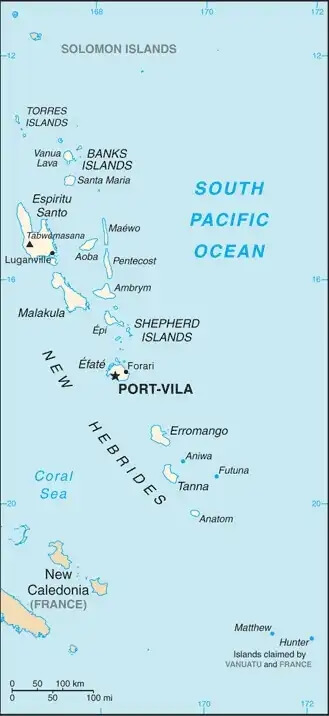World Book
Vanuatu
Introduction
Background
Austronesian speakers from the Solomon Islands first settled Vanuatu around 2000 B.C. The British and French, who settled the islands (then known as the New Hebrides) in the 19th century, agreed in 1906 to a condominium, which administered the islands until independence in 1980 under the new name of Vanuatu.
Geography
Area
total : 12,189 sq km
land: 12,189 sq km
water: 0 sq km
Climate
tropical; moderated by southeast trade winds from May to October; moderate rainfall from November to April; may be affected by cyclones from December to April
Natural resources
manganese, hardwood forests, fish
People and Society
Population
total: 318,007 (2024 est.)
Ethnic groups
Ni-Vanuatu 99%, other 1% (European, Asian, other Melanesian, Polynesian, Micronesian, other) (2020 est.)
Languages
indigenous languages (more than 100) 82.6%, Bislama (official; creole) 14.5%, English (official) 2.1%, French (official) 0.8% (2020 est.)
Religions
Protestant 39.9% (Presbyterian 27.2%, Seventh Day Adventist 14.8%, Anglican 12%, Churches of Christ 5%, Assemblies of God 4.9%, Neil Thomas Ministry/Inner Life Ministry 3.2%), Roman Catholic 12.1%, Apostolic 2.3%, Church of Jesus Christ 1.8%, customary beliefs (including Jon Frum cargo cult) 3.1%, other 12%, none 1.4%, unspecified 0.1% (2020 est.)
Population growth rate
1.55% (2024 est.)
Government
Government type
parliamentary republic
Capital
name: Port-Vila (on Efate)
Executive branch
chief of state: President Nikenike VUROBARAVU (since 23 July 2022)
head of government: Prime Minister Jotham NAPAT (since 11 February 2025)
Diplomatic representation in the US
chief of mission: Ambassador Odo TEVI (since 8 September 2017)
note - also Permanent Representative to the UN
Diplomatic representation from the US
chief of mission: Ambassador Ann Marie YASTISHOCK (since 16 April 2024); note - also accredited to the Papua New Guinea and the Solomon Islands, based in Port Moresby, Papua New Guinea
Economy
Economic overview
lower-middle income Pacific island economy; extremely reliant on subsistence agriculture and tourism; environmentally fragile; struggling post-pandemic and Tropical Cyclone Harold rebound; sizeable inflation; road infrastructure aid from Australia
Real GDP (purchasing power parity)
$1.039 billion (2024 est.)
$999.162 million (2023 est.)
$1.009 billion (2022 est.)
Real GDP per capita
$3,200 (2024 est.)
$3,100 (2023 est.)
$3,200 (2022 est.)
Exports
$152.087 million (2022 est.)
$82.08 million (2021 est.)
$132.943 million (2020 est.)
Exports - partners
Thailand 49%, Japan 19%, Cote d'Ivoire 10%, China 7%, USA 3% (2023)
Exports - commodities
fish, ships, perfume plants, wood, copra (2023)
Imports
$579.347 million (2022 est.)
$520.391 million (2021 est.)
$438.373 million (2020 est.)
Imports - partners
China 26%, Australia 15%, Angola 11%, Fiji 9%, NZ 8% (2023)
Imports - commodities
refined petroleum, ships, plastic products, poultry, trucks (2023)
Human Development Index
The country's Human Development Index (HDI) is 0.621, ranking it 146th out of 193 countries tested. (more information)



